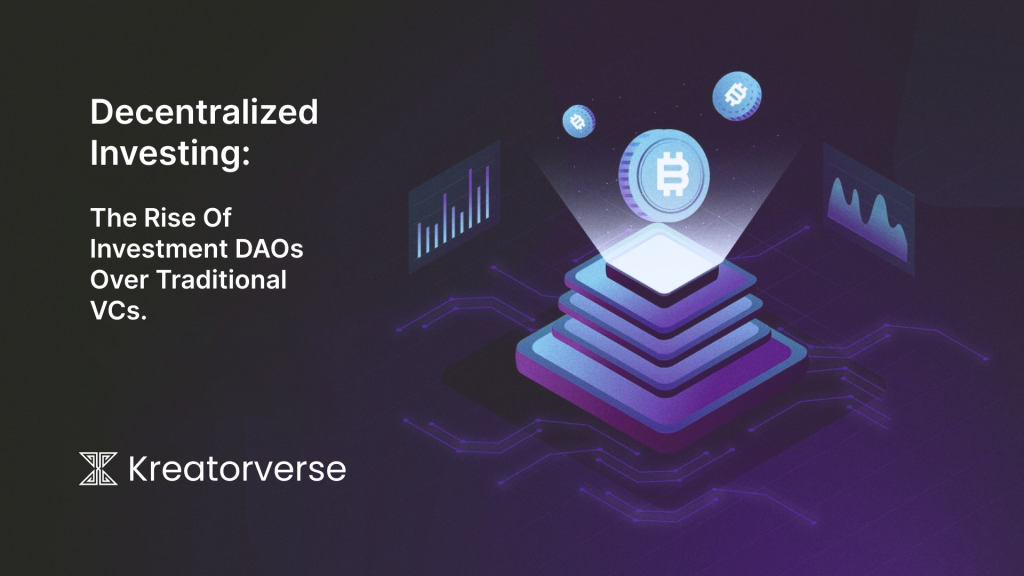When it comes to innovation, some industries embrace new technology and innovation faster than others. The gaming industry has always been one of the leading adopters of the latest technology, constantly providing gamers with the best possible in-game experiences. Play-to-earn games have taken innovation one step further by leveraging cutting-edge blockchain technology to offer users an unparalleled gaming experience combined with lucrative financial opportunities. The rise in consumer interest in Web3, crypto, NFTs, and decentralized finance is favourable for play-to-earn games that embody all these critical features of blockchain technology. This article simplifies and breaks down all you need to know about web3 gaming and how it could benefit you, specifically with web3 game development.
What is Web3 play-to-earn gaming?
P2E gaming is a new generation of games built on blockchain technology that offers users the ability to enjoy their favourite games along with the functionality to trade and gain financially from their in-game assets. In some parts of the world, P2E games are a stable source of income rather than a leisure activity. Web3 games allow users to acquire cryptocurrencies from NFTs and crypto tokens integrated into the games that hold real-world monetary value. These assets are present as in-game collectibles, such as virtual land, weapons, cosmetics, pets, and more. As play-to-earn games’ market share is increasing in the gaming industry, the fullest potential of decentralized games is yet to be truly understood. But we know their critical features sufficiently drive their popularity in the gaming industry.
What are the features of Web3 play-to-earn games?
Play-to-earn games are not just your garden-variety computer games; instead, they offer players an entirely new Web3-powered gaming experience. Some games, such as Decentraland, are elaborate virtual environments set in the metaverse that enable users to engage in unrestricted hours of gameplay to achieve lucrative tasks for financial gain. In addition to the feature of earning money comes a wide range of added asset security and ownership benefits that make it much more desirable to players than traditional games.
Here are some of the popular features of Web3 P2E games that bring them acclaim:
Ownership
When playing traditional games, all in-game assets and items collected or purchased are unusable outside the game’s ecosystem, where the gaming company rather than the player reserves ownership of the digital assets. As all conventional games eventually lose popularity and users, most of these collectibles are worthless once the gamer switches to another game. These collectibles are often non-transferable to other games. The revolutionary concept behind DeFi games is to offer users immutable ownership over all assets acquired in-game. Due to their excellent interoperability, these assets and corresponding user ownership details are recorded on the blockchain ledger. Players can transfer them onto other platforms or market them as they please.
Negligible downtime
Decentralized web3 games primarily run on blockchain technology with significantly lesser downtimes and maintenance requirements than traditional games that often require server maintenance to ensure quality standards are met and incur according to costs. Reduced downtimes are another crucial aspect that catalyzes the userbase numbers of web3 play-to-earn games. It offers stability and consistency for players to earn income leisurely based on their schedules without any hindrances from inconvenient downtimes. Reduced downtimes facilitated by a stable platform benefit game developers by providing a hindrance-free ecosystem allowing them to build a player-centric web3 game.
Security
One of the critical features of crypto games backed up by blockchain technology is its safeguards from getting hacked. Every new in-game transaction is encrypted and encoded on a new blockchain block, which houses all prior transactional information from previous blocks. Hence, a successful hack requires a simultaneous attack and forced changes on all blocks of the distributed ledger, which is an improbable feat. To summarize, every time a new block is created with the updated transactions, the blockchain becomes more secure. Hence, while traditional games have vulnerabilities such as a centralized server or a single point of attack for malicious intent, blockchain-based game assets are safely distributed and cannot be attacked or stolen easily.
Transparent gaming
Due to the decentralized nature of these games, all decisions toward the game’s future or features are made by a fair voting system where all stakeholders get to decide on which direction they want the game to go. This level of transparency is unheard of in the traditional gaming industry, thus setting a benchmark for future game design, possibly catalyzing a shift of more players toward web3 gaming.
Player-driven gaming
As mentioned earlier, the players decide the game’s future due to the autonomy offered in play-to-earn games. Each player has the right to vote on what direction the game should take to scale and what features to add to enhance player experiences without compromising the features that make it unique. Making players themselves the centre of decision-making without a centralized governance body supervising makes the web3 gaming ecosystem stand out from other forms of gaming.
How to get started with Web3 game development
Now that you have the basic information on what P2E games are and what are their most essential features, you are one step closer to creating your own web3 game. To get started, we have compiled a few important aspects that have proven crucial in starting your Web3 game development journey and implementing a successful DeFi game.
Finding the right Web3 game developer
The quality and capabilities of web3 game developers play a crucial role in the success of web3 games. So it would help if you were careful with whom you engage and what features they can bring to the table with their outcome. Some key features that gamers look forward to in games are immutability, security, verifiable ownership, and a player-driven ecosystem that does not have centralized governance driving its decision-making. An adept developer should be able to begin development with all these integrated features.
Prioritizing in-game economics
When designing your game ecosystem, there should be optimized game economics between users contributing and drawing their money to and from the game. An imbalance favouring either direction can affect the game’s success. For instance, if players spend more money on the game and get little to no economic benefits, they are bound to shift away to other, more lucrative games. In such situations, the game loses its desirability. Alternatively, in cases where the customers are receiving substantial monetary gain from the game while not making contributions toward the ecosystem can be highly detrimental to your game’s sustainability. Here, the game may amass a large player base, but developers and investors will most likely lose a substantial amount of money. So, either way, it is essential to ensure that the most economic balance is achieved for yourself and the game ecosystem to thrive.
Governance through Gaming DAOs
Gaming DAOs are vital for play-to-earn games and help drive a community-driven gaming ecosystem. Through gaming DAOs, developers can distribute the game ownership to all the players, developers, investors, and traders who work with one another to promote its scalability and decision-making. If looking toward web3 studios for your game development, they must be familiar with gaming DAOs and how to implement one that can appropriately compensate players for their in-game success and additionally benefit the game developers.
Integrating NFTs
Non-fungible tokens are integral to numerous successful DeFi games. They represent the in-game collectibles players acquire and are recorded on the blockchain. Integrating NFTs into the game is a great way to increase the game’s desirability. The global Play-to-Earn NFT Games market size was valued at USD 3292.73 million in 2022 and is expected to expand at a CAGR of 17.93% during the forecast period, reaching USD 8856.95 million by 2028.
This is a real-world instance of the incredible potential that lies ahead for NFT games. If you lack the necessary information on NFTs and how to start your own, reaching out to a Web3 studio specializing in non-fungible tokens and NFT gaming would be wise.
Using smart contracts for processes
Familiarize yourself with smart contracts, as they are the fundamental building blocks of DeFi gaming that make the governance of the game processes possible. They further allow developers and stakeholders to monitor operations and decision-making for the game’s future. Several open-source tools are available to write, compile, and deploy the smart contracts you need. If you feel you aren’t adept at performing this task. With the proper assistance, you can leverage smart contracts to create the right automated processes and a highly lucrative crypto game for your target audience.
Digital wallet integration
Integrating a blockchain digital wallet allows players to store their digital collectibles and assets and can act as unique identifiers of players. They enable the games to store and verify in-game asset details and their corresponding ownership information on the blockchain. Without an integrated wallet, the game will lack the means to give its users an easy solution for monitoring and performing various actions with their digital assets.
Implementing dApps and web3 libraries
dApps are another vital part of Web3 games as they enable in-game transactions. Through Web3 libraries, the players and various game developers can effectively interact with the platform’s blockchain ledger. These two aspects support transactions and interact with the various smart contracts that guide the game processes.
In conclusion, your Web3 game ideas are easily implementable with the proper guidance and information. DeFi play-to-earn games are here to stay and are gaining a larger global fanbase with every passing day, primarily due to all the benefits we have explored in this article. A good web3 studio should be able to show you the ropes and help you immediately begin developing your game before any competition arises.
How Kreatorverse simplifies Web3 game development
We at Kreatorverse, a dedicated web3 product studio where we specialize in all aspects of blockchain, cryptocurrency, NFTs, and everything in the decentralized web, are here to guide you through your blockchain journey. Our services include how to convert your P2E game dreams into a reality. Want to know more? Contact us today.






